A study of the feces of Adélie penguins from Inexpressible Island on the Ross Sea of the Antarctic sheds new light on how the avian population may survive during climate change. Plus, the possibility for life on Mars and understanding destructive meteors.
Podcast
Transcript
Hello and welcome to the Daily Space. I am your host Dr. Pamela Gay.
And I am your host Beth Johnson.
And we are here to put science in your brain.
Before we get to the science news, we want to give a shout-out to the crew of Inspiration4 and their successful journey. We will dedicate an entire segment to their historic flight tomorrow during our normal rocket roundup.
And honestly, today’s first segment may convince you that you would really like to replicate Inspiration4’s flight, just maybe for a whole lot longer… like until we sort out climate change.
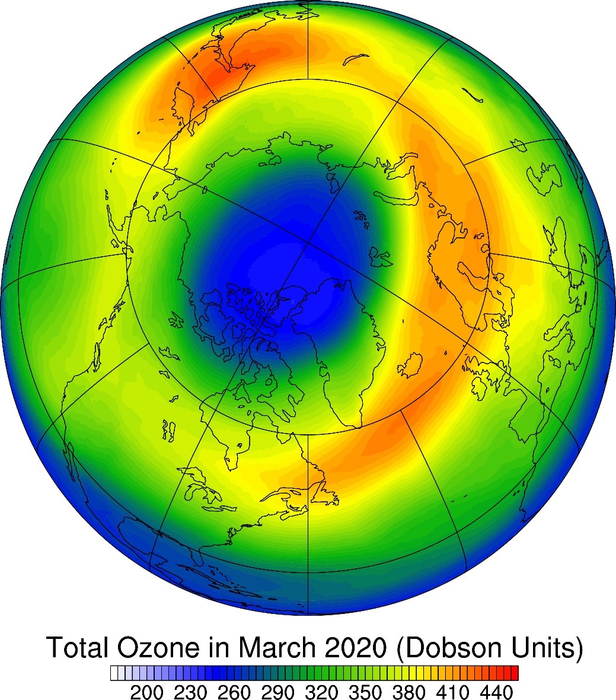
Back when I was in middle school, big hair, made possible through large amounts of aerosol hairspray, was a thing. Do you know what else was discovered to be a thing? A big hole in the ozone layer over the Antarctic was growing, and likely part of the reason for increased skin cancer levels. In very short order, the world came together in one of the greatest examples of multinational teamwork I can identify, and following the advice of scientific research, they banned the use of a lot of ozone layer depleting chemicals like freon, and that hairspray I used so much got changed from aerosol to pump, and things went from the fuzzy, big hair of the 80s to the crunchy locks of the 90s.
Haircare aside, because of our actions, the ozone hole in the south has been reduced over time.
The Northern Ozone Layer had been saved from seasonal depletion by a trick of the lack of landscape. While the Antarctic warmed in the summer, allowing a high-altitude vortex to warm the atmosphere, the sea ice and oceans of the north lacked that kind of dynamic heating, and without the heating, no ozone hole had been seen.
Until 2020.
The record-high North Pacific sea surface temperatures of spring 2020 brought with them the dynamical heating needed to create an Arctic ozone hole. According to study lead author Youngyun Hu: The formation of the record Arctic ozone loss in spring 2020 indicates that present-day ozone-depleting substances are still sufficient to cause severe springtime ozone depletion in the Arctic stratosphere. These results suggest that severe ozone loss is likely to occur in the near future as long as North Pacific warm SST anomalies or other dynamical processes are sufficiently strong.”
This one-two punch of our past pollutants and the warming Arctic is just one more source of existential dread that will keep me awake at night.
The warming of our oceans is radically changing how our atmosphere blows and storms. From ozone-hole-triggering polar vortices to equatorial forming hurricanes, everything seems to be spinning up with the extra energy provided by the warmer oceans.
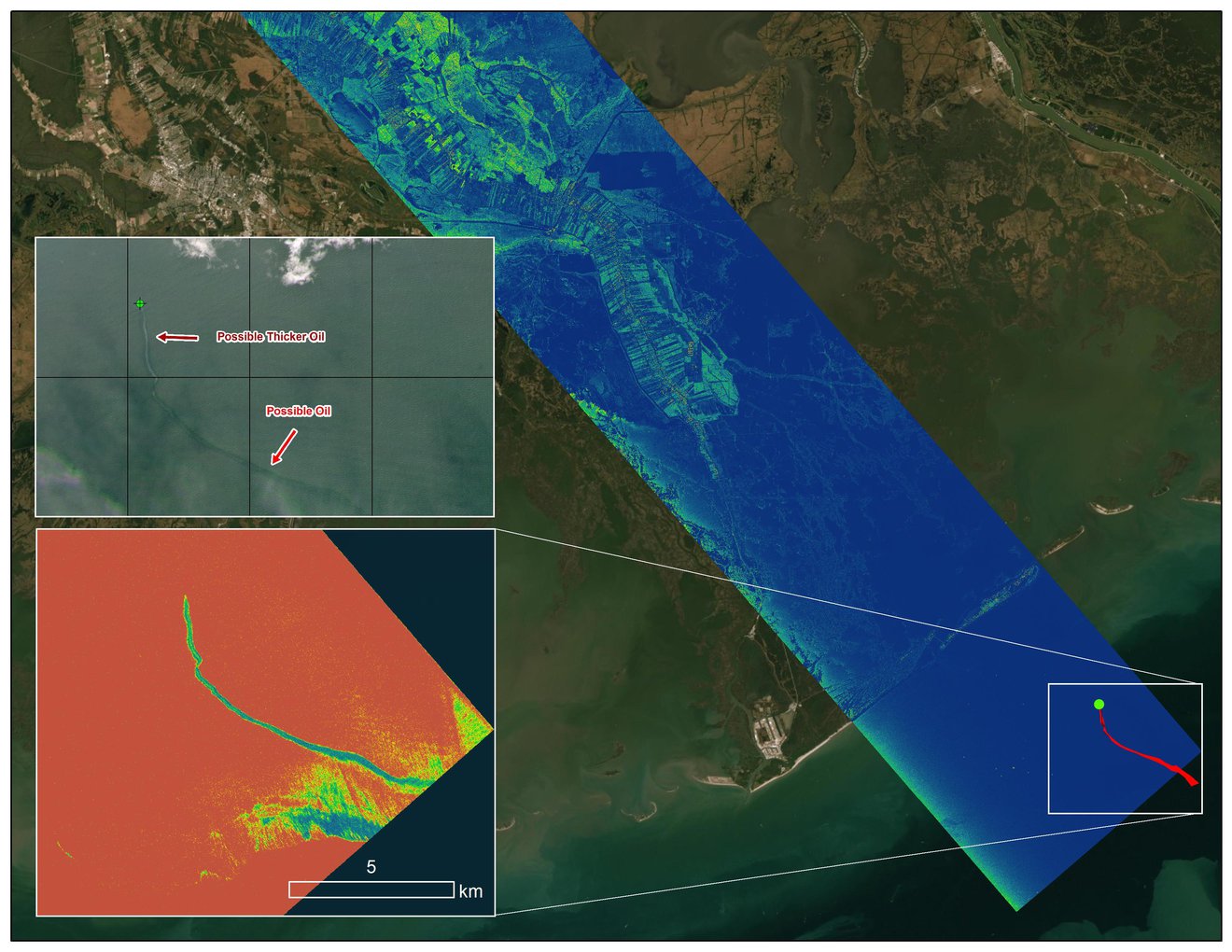
Last month, Hurricane Ida made landfall as a category 4 hurricane and devastated parts of the Louisiana coastal wetlands. Along with the loss of trees, buildings, and other structures, there were also a number of oil pipelines that sprung leaks and had the potential to cause permanent damage to the ecosystems along the Gulf Coast. To help spot problem spots, the National Oceanic and Atmospheric Administration, or NOAA, flew a special kind of radar system, developed for the Delta-X project, to look for the smooth spots oil made in the normally more turbulent waters.
Delta-X was originally put together to study two areas of wetlands, one that is losing land to erosion and another that is accumulating sediment and filling in, and the goal of the mission is to learn how to forecast which areas of river deltas are likely to gain and lose land as sea levels change. While it is horrifying to realize just how much oil gets spilled during massive storms, I’m glad to know that scientific tools designed to study normal processes can be used to save us from problems of our own making.
As the seasons turn, this year we can expect more polar vortices, and this ozone hole is going to get a lot of attention as the mid-latitudes bundle up and the polar regions enjoy unwanted warmth. This is your regular reminder that while global temperatures may only be increasing fractions of a degree a year, that average change hides that some areas are getting radically colder and others warmer. Order your sweaters now; we’re going to need them.
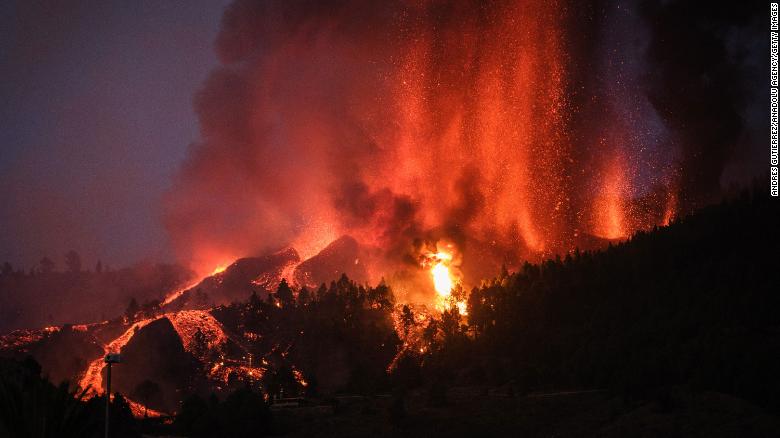
In somewhat and somehow happier news, a giant volcano in the Canary Islands is erupting for the first time in fifty years, and thanks to a nearby observatory, we have awesome views of the terrible destruction.
The Cumbre Vieja volcano erupted after shaking the area with warning earthquakes that allowed for evacuations to take place. More than 6,000 people fled as lava has made its way toward the sea. This Spanish island off the coast of Northern Africa is home to a number of observatories that share the Roque de Los Muchachos peak, and from their perch at 7,900 feet, the observatories are able to safely look down at the 2,000-foot high volcano.
While this volcano is permanently changing the lives of the peoples whose homes and livelihoods it is taking away, geologists believe there is no reason to be concerned that the eruption could trigger massive tsunamis, which is apparently a potential concern for this volcano. As stated in a National Geographic article by Robin George Andrews: ...the residents of La Palma are being protected by a vanguard of volcanologists and a shield of seismologists. The long-term efforts by geoscientists on the island ensured that it was clear that something wicked was brewing long before serpentine lava flows crept out of Cumbre Vieja’s hillside.
We’re going to link to this article on our website, DailySpace.org.
Okay, that was a lot of heavy news, and while this next story also looks at how life on Earth is changing, it does it in a way that I hope will bring you a bit of joy.
In a new paper appearing in Geophysical Research Letters and led by Q.B. Xu, a team of researchers looks at the history of deep ocean circulation by examining the Adélie penguins’ poop.
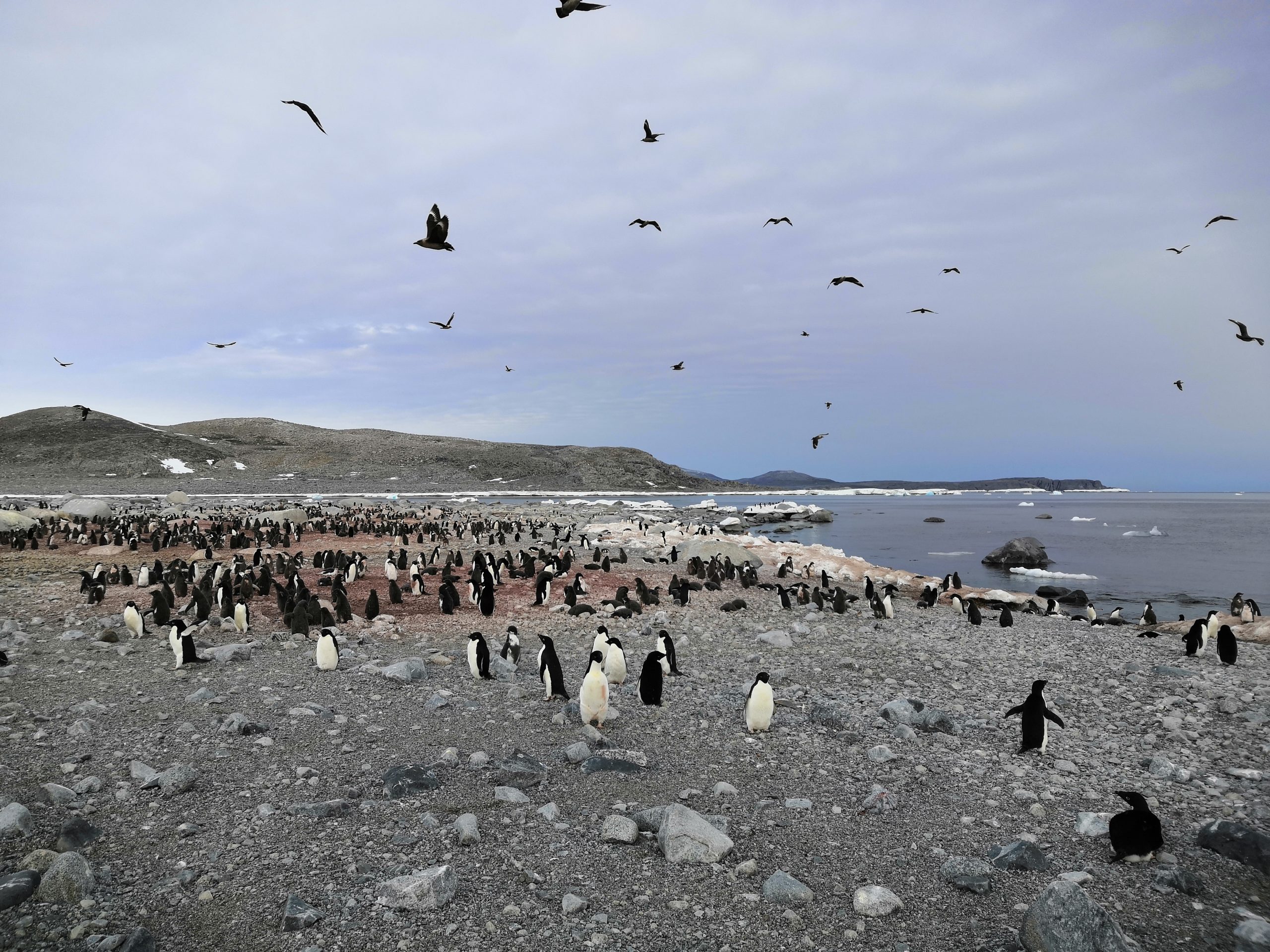
This story has me using a lot of language astronomy never prepared me to discuss.
As the science goes, researchers measured ocean circulation via poop samples collected from the Inexpressible Island on the Ross Sea. For 6,000 years, penguins have been pooping on this island, and as their defecation has built up, it has recorded the history of what the penguins have been eating, and thus recorded a history of the ocean waters in which the penguins feed.
In writing this story, I learned that the term for many years of accumulated bat or bird feces is guano and that research like this isn’t as possible as some researchers may like because there is a long history of folks collecting guano to use as fertilizer, but that is a different story.
On the Inexpressible Island in the icy Ross Sea, the penguin poo was plentiful, and researchers were able to collect thirteen different profiles of the penguins from different places on the island. In the layers of that six millennia of penguin processed ocean life, researchers were able to determine that periodically, changing ocean currents dredge minerals like cadmium from deep in the sea to the surface areas where penguins feed. This is a story of the chain of life.
Put simply, for 6,000 years, the ocean currents have periodically changed, and these changes affected how much of the deep sea cadmium reached the surface, where it is integrated into plankton, eaten by fish and krill, which is eaten by penguins who poop, and that poop is now being studied by researchers trying to understand ocean circulation.
Folks, I never thought that as a space scientist I’d ever be reporting a story like this one. This is further evidence that where there is a scientific question, there is a researcher willing to think super creatively to find an answer; heck, in this case, there was a research team willing to creatively dig through guano to get at some cool planetary science results, where our Earth is the planet in question.
And now, back to death and destruction. Well, kind of. There’s not actually recent death in this next story. In fact, researchers are trying to protect life. If only the dinosaurs had had science…

A team of scientists at the University of Illinois Urbana-Champaign analyzed what happened to two meteor fragments from different meteorites as they were heated up to the temperature experienced during Earth’s re-entry. They found that lucky for life on Earth, the heating vaporized a particular type of mineral, leaving behind voids in the meteor and causing the rock to be more porous. That’s good because the meteor breaks up more easily as it burns up in the atmosphere, creating less destruction on the ground.
The two meteorites sampled were Tamdakht, which landed in Morocco in 2008, and Tenham, which was recovered from Queensland, Australia in 1879. Both meteorites are chondrites, meaning they are stony meteorites without a lot of metals like iron and nickel. The two are also slightly different in composition from one another, so the team got to study how different meteors react upon re-entry.
And it turns out that iron sulfides do not like heat. Lead author Francesco Panerai explains: The iron sulfide inside the meteorite vaporized as it heated. Some of the grains actually disappeared leaving large voids in the material. The ability to look at the interior of the meteorite in 3D, while being heated, led us to discover a progressive increase of material porosity with heating. After that, we took cross-sections of the material and looked at the chemical composition to understand the phase that had been modified by the heating, changing its porosity.
When you add pores, or voids, to rocks, their structures become weaker, making them more likely to break apart in the atmosphere and not cause large, destructive impacts. This is a good thing. Another good thing is that the iron sulfides vaporize at relatively low temperatures during re-entry.
Next up, the team is working on a machine-learning algorithm to predict what will happen if a meteor enters the atmosphere, depending on its size, the angle it enters at, and its possible composition. That’s a lot for a human to catalog, but AI is great for that sort of analysis. And perhaps they’ll find answers that can be used to save lives in the future.
After all, meteors can cause a lot of damage, and we would like to prevent that damage as best we can. As recently as the Chelyabinsk meteor in 2013, we have seen firsthand the damage a meteor that breaks up in the atmosphere can cause. But we have also dug through the past to understand just how bad it can get during a meteor strike. Again, ask the dinosaurs.
But not every big meteor has to wipe out most of life on Earth. Some can just wipe out a small city and possibly inspire a Bible story.
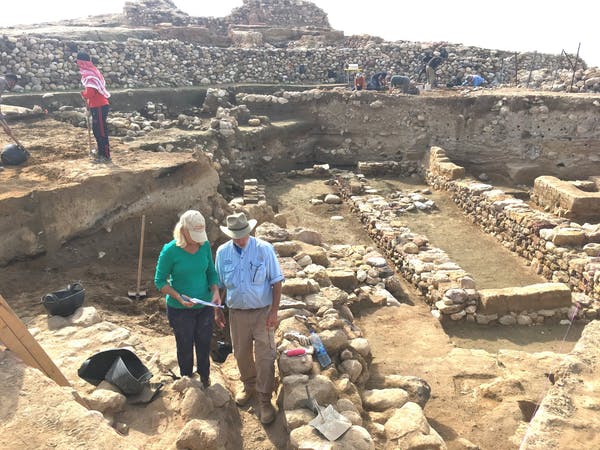
The town was Tall el-Hammam. Well, that’s what it’s called today. It was a thriving town of 8,000 people and their livestock. Then about 3,600 years ago, a meteor entered the atmosphere, exploding in a fireball at about 4 kilometers above the surface of the Earth, close to this small town. With a blast 1,000 times more powerful than Hiroshima’s atomic bombing, the town was destroyed by the resulting 1,200 kph shockwave and extreme temperatures, around 2,000 degrees Celsius.
No one in the town survived, and the town itself was wiped out. Then 22 kilometers away and a minute later, that same shockwave hit the biblical city of Jericho, whose walls came tumbling down.
All of the data for this story was collected over 15 years through excavations by a cast of hundreds. The evidence was published in the journal Scientific Reports, and the 21 co-authors were made up of everyone from archaeologists to geochemists to paleobotanists to cosmic-impact experts and everything in between, including medical doctors.
Now I said there weren’t any survivors, but some of you might be familiar with the story of Sodom and Gomorrah in the Bible. Sodom is destroyed by a rain of stones and fire, and it’s thought to have been in the same-ish location as Tall el-Hammam. It’s distinctly possible that this biblical tale is an eye-witness account of this meteor impact, and its destruction was passed down for generations until finally recorded in writing. That would also make it the first written record of a meteor strike of this magnitude.
And that’s why we are working to understand the hows and whys of asteroids and meteors. It doesn’t have to be a dinosaur-killer to be destructive.
One of the questions I’m most interested in seeing answered in my life is this: Did Mars once support life? If it still has life today, that is going to create a lot of international chaos as billionaires and governments argue the ethics of sending humans to a world that has life our germs may kill. I’m all for fossil hunting on Mars, but I’m kind of hoping there isn’t current life we need to worry about with our rovers and future people.
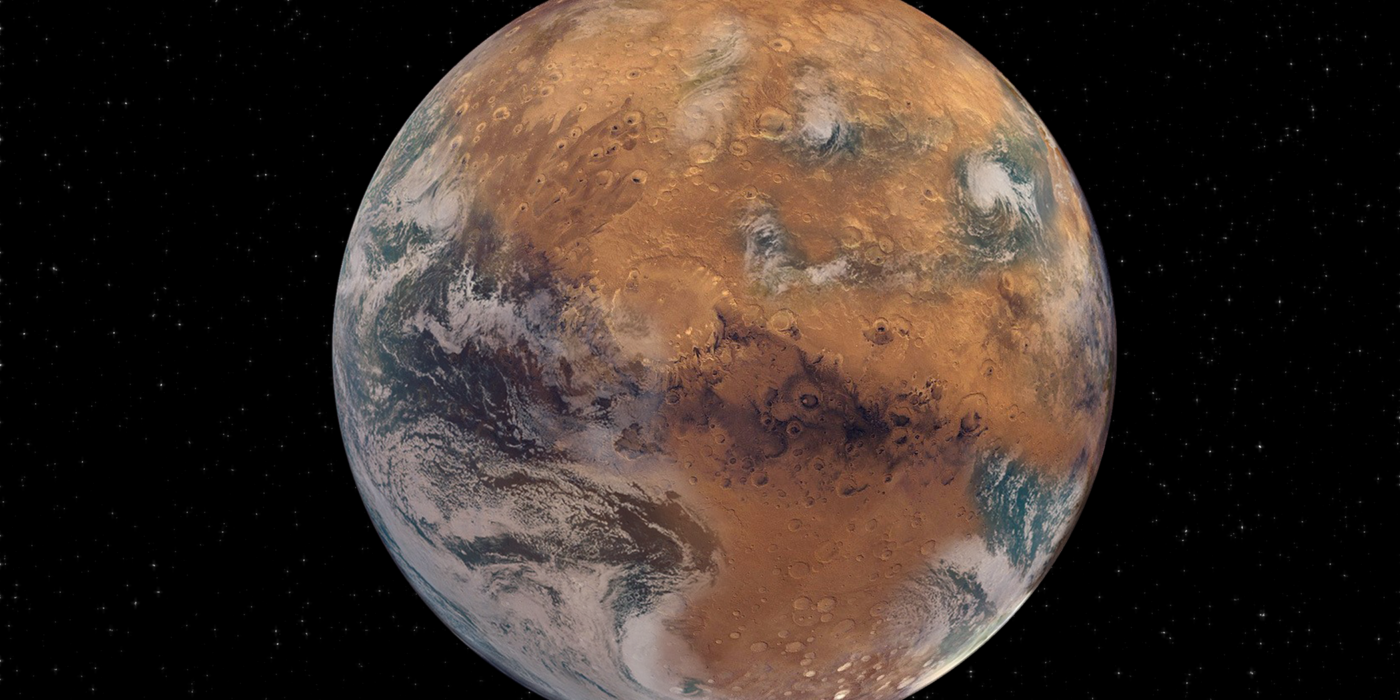
In trying to sort if Mars did or does have life, scientists are working hard to understand just what is needed to get atoms to go from having simple chemical reactions to having biological interactions. The one thing everyone seems to agree on is that life benefits from water and a lack of radiation. Today, no liquid water remains hanging out on Mars’s surface, and its lack of a modern magnetic field allows problems with radiation to persist.
These two issues – lack of water and excess of radiation – are both related to the same thing: Mars is small. Planets with low gravity struggle to hold onto water. When water vapor rises through the atmosphere, the molecules can get broken apart, and it is super easy for hydrogen atoms to get accelerated to escape velocity during collisions. As atmospheric pressure drops, water goes to vapor more easily, more gas is lost, and the cycle continues until you end up with a thin atmosphere.
Aiding in the destruction of the atmosphere is the lack of a magnetic field. Internally hot planets have liquid layers with charged particles that can drive magnetic fields and volcanism. Small planets – like Mars – cool faster than larger worlds like Earth, and while our world still has liquid layers, Mars doesn’t really. It may have pockets of magma, but that’s not the same. A protective magnetic field stops high-energy particles from reaching deep into the atmosphere and to the surface and stops much of the atmosphere from escaping. Even if we could somehow make Mars a water-rich world with a thick atmosphere, that lack of a liquid inner core combined with its low mass would make terraforming only be temporary.
And in a new article in the Proceedings of the National Academy of Sciences, researchers led by Kun Wang use Mars as an example of the tipping point between worlds that can and can’t have long-term life. Wang explains: Mars’ fate was decided from the beginning. There is likely a threshold on the size requirements of rocky planets to retain enough water to enable habitability and plate tectonics, with mass exceeding that of Mars.
To trace the history of water on Mars, they looked at the abundance of potassium, which is linked to the amount of easily lost materials – volatile elements – that are on planets. According to Wang: It’s indisputable that there used to be liquid water on the surface of Mars, but how much water in total Mars once had is hard to quantify through remote sensing and rover studies alone. … Martian meteorites are the only samples available to us to study the chemical makeup of the bulk Mars. Those Martian meteorites have ages varying from several hundred millions to 4 billion years and recorded Mars’ volatile evolution history. Through measuring the isotopes of moderately volatile elements, such as potassium, we can infer the degree of volatile depletion of bulk planets and make comparisons between different solar system bodies.
The depletion of potassium that they measured indicates Mars was wet but not as wet as life might have appreciated. While putting a damper on my whole desire to go fossil hunting on the red planet, this research also means we need to change what we look for when we look for habitable worlds. Co-author Klaus Mezger states: This study emphasizes that there is a very limited size range for planets to have just enough but not too much water to develop a habitable surface environment. These results will guide astronomers in their search for habitable exoplanets in other solar systems.
For better or worse, tiny worlds are hard to find, so at least we know we’re more likely to find the potentially habitable worlds first. I think that is good news?
This has been the Daily Space.
You can find more information on all our stories, including images, at DailySpace.org. As always, we’re here thanks to the donations of people like you. If you like our content, please consider joining our Patreon at Patreon.com/CosmoQuestX.
Learn More
New Northern Ozone Hole Discovered
- Spring 2020 arctic “ozone hole” likely caused by record-high north pacific sea surface temperatures (EurekAlert)
- “Record Arctic Ozone Loss in Spring 2020 is Likely Caused by North Pacific Warm Sea Surface Temperature Anomalies,” Yan Xia et al., 2021 July 10, Advances in Atmospheric Sciences
Science Planes Do Post-Ida Environmental Monitoring
- NASA JPL press release
Cumbre Vieja Volcano Erupts in Canary Islands
- Canary Islands volcano roars to life for first time in 50 years (National Geographic)
Penguin Poo Reveals Past Populations
- AGU press release
- “6,000-Year Reconstruction of Modified Circumpolar Deep Water Intrusion and Its Effects on Sea Ice and Penguin in the Ross Sea,” Q. B. Xu et al., 2021 July 26, Geophysical Research Letters
Vaporizing Sulfides Make Meteors Structurally Weak
- UIUC press release
- “Morphological Evolution of Ordinary Chondrite Microstructure during Heating: Implications for Atmospheric Entry,” Francesco Panerai et al., 2021 September 6, The Planetary Science Journal
Ancient Meteor Strike May Be Destruction of Sodom
- A giant space rock demolished an ancient Middle Eastern city and everyone in it – possibly inspiring the Biblical story of Sodom (The Conversation)
- “A Tunguska sized airburst destroyed Tall el-Hammam a Middle Bronze Age city in the Jordan Valley near the Dead Sea,” Ted E. Bunch et al., 2021 September 20, Scientific Reports
Mars May Be Too Small to Have Life; Maybe
- Washington University in St. Louis press release
- “Potassium isotope composition of Mars reveals a mechanism of planetary volatile retention,” Zhen Tian et al., 2021 September 28, PNAS
Credits
Written by Pamela Gay and Beth Johnson
Hosted by Pamela Gay and Beth Johnson
Audio and Video Editing by Ally Pelphrey
Content Editing by Beth Johnson
Intro and Outro music by Kevin MacLeod, https://incompetech.com/music/


 We record most shows live, on Twitch. Follow us today to get alerts when we go live.
We record most shows live, on Twitch. Follow us today to get alerts when we go live.